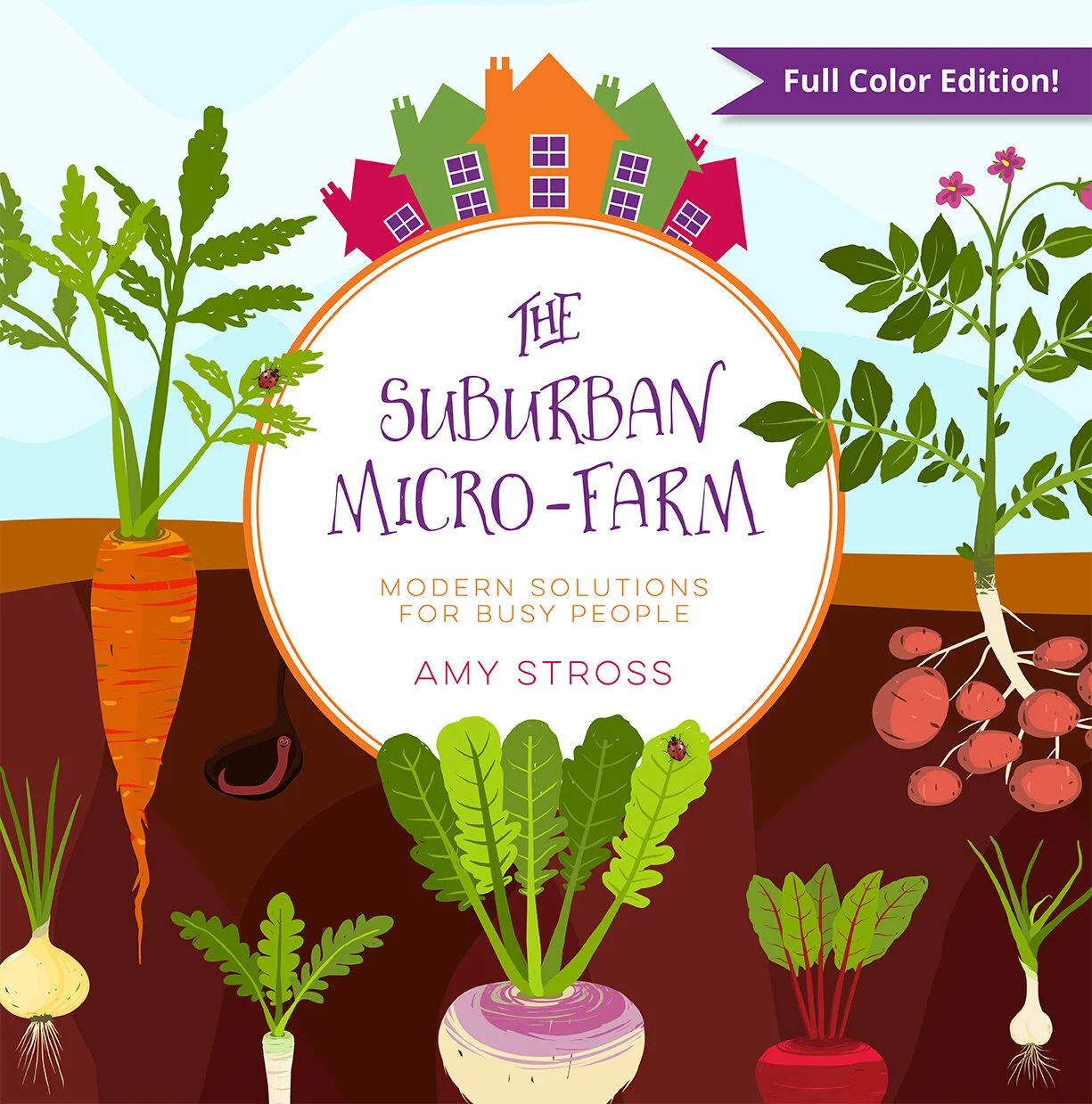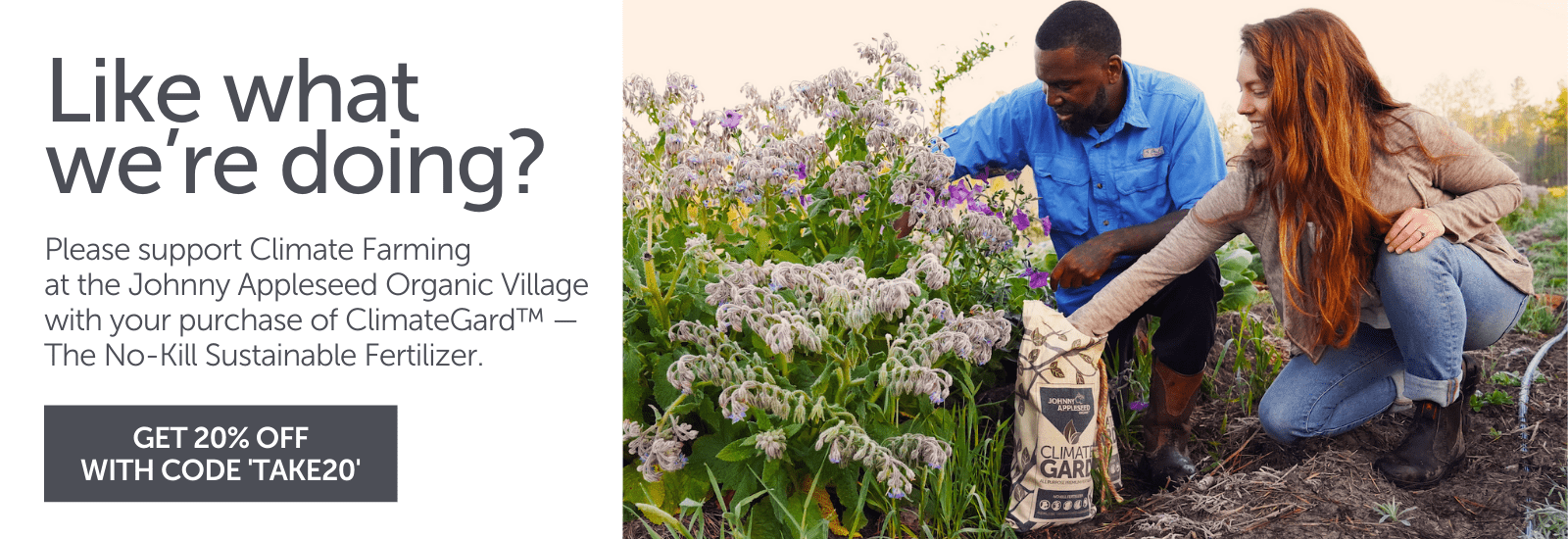The Suburban Micro-Farming Solution
By Amy Stross
Humans eat a lot of food, which has to come from somewhere. That somewhere is usually far away, industrial farms on wide expanses of clear-cut, rural land. By transitioning annual food production to the suburbs, we open the opportunity for rural lands to focus on things that need more space, such as staple crops, livestock, and timber, and to once more support native fora and fauna species that require large tracts of contiguous, undisturbed land for survival.
In a country where less than one percent of the population farms, increasing food production in suburban landscapes would increase national food security. But I wondered: Would we need more land for food production if we shifted production to the suburbs? Modern industrial agriculture claims to be really efficient at producing food.
The answer is no. According to “The Garden Controversy,” a study published by the University of London, suburban backyard gardens are three times more productive than farmland. When comparing food production on one acre of suburban land to one acre of farmland, the suburbs out-produced rural land by three times the amount of food by weight. In other words, small farms and gardens are not a waste of time or space!
Another study also confirms the productive opportunities of the suburbs. An Ohio State University study discovered that the city of Cleveland, Ohio, could produce almost 100% of its needs for fruits, vegetables, chicken eggs, and honey by using vacant lots, commercial and industrial rooftops, and just 9% of each residential property for growing gardens, raising chickens, or keeping bees.
At first it may seem unattainable for any city to achieve the amount of self-sufficiency referenced in this study, but I am hopeful that, if a land-scarce city could achieve productivity levels rivaling rural operations, the suburbs—with our wide expanses of lawn—could certainly scale up food production and “take more responsibility for our own existence,” as Mollison urges us to do.
We’ve already experimented with the small-scale model of food production in the form of Victory Gardens. During the World Wars I and II, many farmers left their fields to become soldiers, radically suspending food production. Citizens were encouraged to support the war effort by growing food in Victory Gardens and preserving it for winter. Plots were created anywhere land was already cleared: farms, backyards, private estates, company grounds, city parks, vacant lots, schoolyards, and even window boxes and rooftop gardens. At their peak in 1944, 20 million garden plots produced 40% of all produce consumed in the United States.
As I mentioned earlier, we’re able to produce enough fruits, vegetables, and herbs to incorporate homegrown food into 50% of our meals on our tiny, 0.10-acre lot. Suburban micro-farmers could produce at least some food to feed their own families and reduce their reliance on food shipped long distances to the grocery store. More and more, there is concern about the growing practices in those faraway industrial farms, as well as whether those in charge have our best interests in mind. When you grow your own food, on the other hand, you know what you are getting. Additionally, it’s clear that transitioning the household from a unit of consumption to one of production can reduce costs.
Whether improving your family’s food security, safeguarding their health, or saving money is your interest, growing your own food is a worthwhile endeavor.
Many of the original suburban houses developed in the 1950s came with three fruit trees. What an amazing gift to have so much delicious abundance growing right in the spaces where people live! Sadly, this practice hasn’t continued into modern housing developments. Today, our suburban landscapes are more sterile than ever. In a transient culture where one-sixth of the population moves each year, we could leave our properties better than we found them by simply planting a fruit or nut tree for the next occupants—and the next generation.
Transitioning a large part of food production away from rural areas to suburban lawns carries a lot of potential, but great care must be taken to ensure that micro-farming practices regenerate fertility and ecological diversity rather than further degrade soil quality.
Toby Hemenway, the author of Gaia’s Garden, writes that we must use “...time-tested techniques honed to perfection by indigenous people, restoration ecologists, organic farmers, and cutting-edge landscape designers.” A permaculture approach to suburban micro-farming will help reduce the toxic use of chemicals, improve soil fertility, reduce erosion, increase habitat for pollinators and beneficial insects, create wild areas, and increase food productivity.
There is a permaculture principle that states, “The Problem Is the Solution.” This principle encourages us to consider that when we think of something as a problem, it may be so only because of the way we think about it. For example, some people today think of the suburbs as an embarrassment, with water-hoarding lawns and a lack of car-centric alternatives, so they choose to live elsewhere. I once made that decision for myself and enjoyed my urban apartment within walking distance of amenities and no lawn to worry about. It was a dandy time!
However, if we realize the enormous potential the suburbs have to change overall consumption habits and transform land-use practices, the suburbs could end up being just the solution our cities—and perhaps even civilization—need. After all, out-lying villages have performed this function in ancient cities of the world throughout history. All we need are some pioneering micro-farmers! As the population of the country swells to unprecedented numbers and once-fertile land is gobbled up and turned into housing developments, it is clear that we need a new kind of farming to match the realities of modern life.
This blog post is a sneak peek inside The Suburban Micro-Farm by Amy Stross, owner of www.TenthAcreFarm.com. Reprinted with permission from the author via Twisted Creek Press and Chelsea Green Publishing Company.
Sign Up for Newsletter
Follow Us on Social
Order ClimateGard™ Bio Organic Fertilizer
Cutting-edge microbiology
No kill formula
Superior plant nutrition derived from the most ethical, sustainable sources available.
Produces the same results as conventional fertilizers without the negative environmental impacts.
Each ClimateGard pellet is infused with micronutrients, silicon, humic acid and a high-performance blend of living bacteria and fungi.
Delivered in an environmentally friendly organic cotton bag with a compostable inner liner.
Will continue to enrich your soil long after application.
$39.95 for 7.5 pound bag | $69.95 for 15 pound bag.



